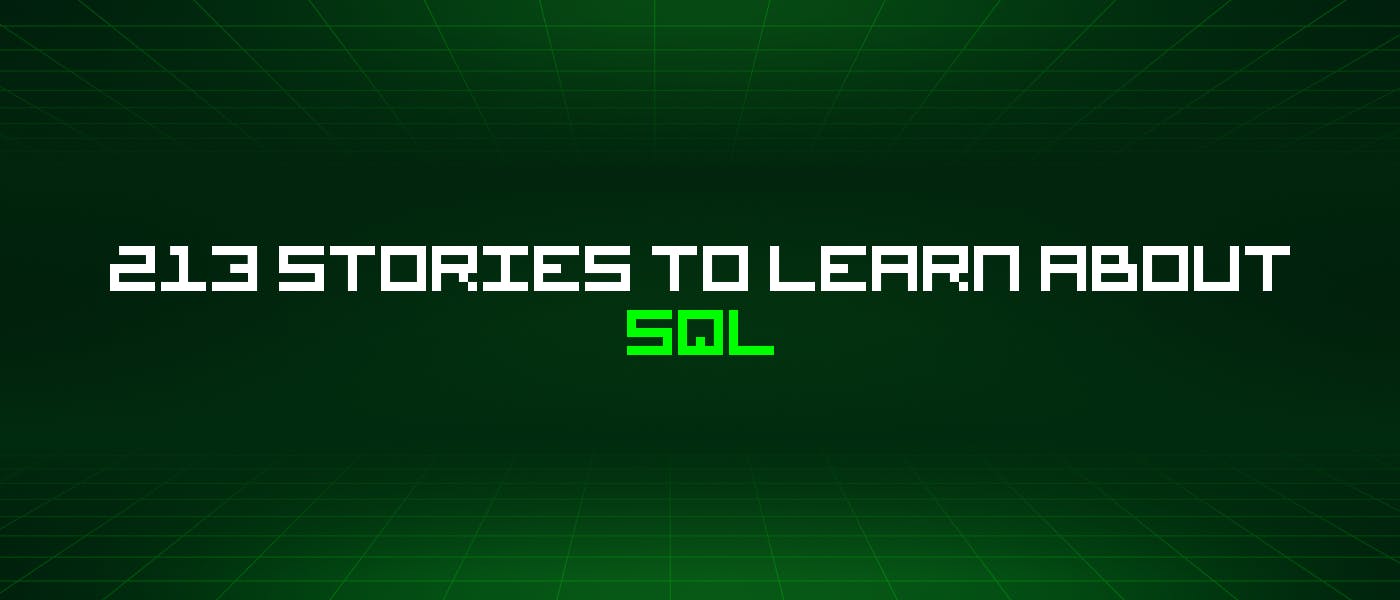Let's learn about Sql via these 213 free stories. They are ordered by most time reading created on HackerNoon. Visit the /Learn Repo to find the most read stories about any technology.
Domain-specific language for stream processing or data management in a relational database management system
1. 7 Useful SQL Resources for Beginners
 In this post, I have compiled some of the most useful SQL resources that I recommend to everyone who wants to study SQL. Depending on how much time you can invest and the type of course one would prefer, I have segregated the resources into different segments. So, let’s begin:
In this post, I have compiled some of the most useful SQL resources that I recommend to everyone who wants to study SQL. Depending on how much time you can invest and the type of course one would prefer, I have segregated the resources into different segments. So, let’s begin:
2. A Tool to Help Fix SQL Code Using ChatGPT
 With ChatGPT's help, you can now make the most out of your SQL queries.
With ChatGPT's help, you can now make the most out of your SQL queries.
3. How to Configure VS Code for Java in 2022
 VS Code is Java-ready! Learn which extensions to use and how to configure it to start coding Java in a modern IDE.
VS Code is Java-ready! Learn which extensions to use and how to configure it to start coding Java in a modern IDE.
4. Postgres: Idle queries and pg_locks
 Getting postgres unstuck when it seems to “hang” or be super slow on queries
Getting postgres unstuck when it seems to “hang” or be super slow on queries
5. How SQL Database Engine Work
 For now, I am assuming that you all know what is SQL or you have some experience with SQL or you are using SQL for many years. I know many people who know so much about SQL and even have created many projects based on SQL and they do not know what is SQL engine or how actually SQL database engine works. It’s obvious no one’s care about the internal working of SQL engine or something because without knowing How SQL works we can still create and access database using any SQL program.
For now, I am assuming that you all know what is SQL or you have some experience with SQL or you are using SQL for many years. I know many people who know so much about SQL and even have created many projects based on SQL and they do not know what is SQL engine or how actually SQL database engine works. It’s obvious no one’s care about the internal working of SQL engine or something because without knowing How SQL works we can still create and access database using any SQL program.
6. How Useful is PostgreSQL Full Text Search
 PostgreSQL is the jack of all trades when it comes to databases. It brings you all the features you've come to love about SQL plus a bunch of features from Non-SQL databases. Some of these Non-SQL features like the JSONB data type are wonderful and you don't even have to dare flirt with another database. Others are good but not as robust and featureful as other databases.
PostgreSQL is the jack of all trades when it comes to databases. It brings you all the features you've come to love about SQL plus a bunch of features from Non-SQL databases. Some of these Non-SQL features like the JSONB data type are wonderful and you don't even have to dare flirt with another database. Others are good but not as robust and featureful as other databases.
7. Introducing Bun: A Golang ORM
 Bun is a SQL-first Golang ORM for PostgreSQL, MySQL/MariaDB, MSSQL, and SQLite. It supports migrations, fixtures, and performance monitoring.
Bun is a SQL-first Golang ORM for PostgreSQL, MySQL/MariaDB, MSSQL, and SQLite. It supports migrations, fixtures, and performance monitoring.
8. 10 Best Online Courses to Learn Oracle and PL/SQL for Beginners

9. How to Сompress a mysqldump Backup Using Gzip
 What is mysqldump?
What is mysqldump?
10. SQLite vs Realm: Which Database to Choose in 2021?
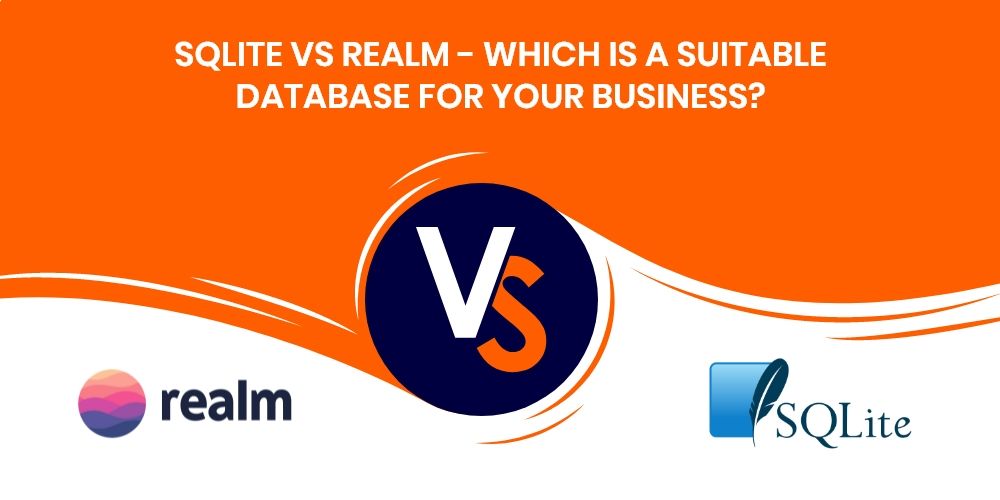 Image a situation wherein you have just launched your app. But the data of your app is not being properly displayed or you are not able to fetch the data that is being entered by the users. What will be the impression of your app in the user’s mind?
Image a situation wherein you have just launched your app. But the data of your app is not being properly displayed or you are not able to fetch the data that is being entered by the users. What will be the impression of your app in the user’s mind?
11. Create and Execute Stored Procedure in PHPMyAdmin

12. How to Solve Race Conditions in a Booking System
 Race conditions in a database and how you can solve them using techniques such as pessimistic and optimistic concurrency control.
Race conditions in a database and how you can solve them using techniques such as pessimistic and optimistic concurrency control.
13. Hybrid Data Models: How To Have Your JSON Cake and Eat MariaDB Too
 By adding support for JSON, MariaDB provides the ultimate schema flexibility without sacrificing transactions or data integrity.
By adding support for JSON, MariaDB provides the ultimate schema flexibility without sacrificing transactions or data integrity.
14. 5 Best Courses to Learn MySQL Database for Beginners
 If you are interested in learning SQL with MySQL database then you have come to the right place.
If you are interested in learning SQL with MySQL database then you have come to the right place.
15. With JSONB Data in PostgreSQL, You Can Get the Best of Both Worlds
 JSONB in PostgreSQL offers the best of relational and NoSQL. Here are two techniques that we use at AppLand to make JSONB data even more effective.
JSONB in PostgreSQL offers the best of relational and NoSQL. Here are two techniques that we use at AppLand to make JSONB data even more effective.
16. 6 Best SQL Programming Books Ranked by Reviews
 SQL Practice Problems and SQL for Dummies are some of the best SQL programming books on the market based on review score.
SQL Practice Problems and SQL for Dummies are some of the best SQL programming books on the market based on review score.
17. PostgreSQL diff Explained

18. How to Install and Configure PHP for Apache and MySQL
 In this article, we explain how to install PHP, Apache, and MySQL and then find out how to configure PHP.
In this article, we explain how to install PHP, Apache, and MySQL and then find out how to configure PHP.
19. How to query JSONB, beginner sheet cheat
 Let’s say we have to query a user table with a metadata JSONB column on a PostgreSQL 9.5+ database.
Let’s say we have to query a user table with a metadata JSONB column on a PostgreSQL 9.5+ database.
20. What is the Future for SQL Developers in a Machine Learning World?
 Do you know the machine learning global market is estimated to reach $30.6 billion by 2024? This marvellous growth is the outcome of Omni-presence of artificial intelligence and its trending subset; machine learning.
Do you know the machine learning global market is estimated to reach $30.6 billion by 2024? This marvellous growth is the outcome of Omni-presence of artificial intelligence and its trending subset; machine learning.
21. Why Are We Teaching Pandas Instead of SQL?
 How I learned to stop using pandas and love SQL.
How I learned to stop using pandas and love SQL.
22. What’s the Database Plus Concept and What Challenges Can It Solve?
 Explaining the Database Plus concept, its impact on system architecture design, and its innovations: from Proxyless Service Mesh to microservice backend support
Explaining the Database Plus concept, its impact on system architecture design, and its innovations: from Proxyless Service Mesh to microservice backend support
23. The Roadmap to Learning SQL in 90 Days
 A Zero to SQL 90 Days Roadmap
A Zero to SQL 90 Days Roadmap
24. A Guide to Importing Smartsheet Data into SQL Server using SSIS
 Easily back up Smartsheet data to SQL Server using the SSIS components for Smartsheet.
Easily back up Smartsheet data to SQL Server using the SSIS components for Smartsheet.
25. Python & Data Engineering: Under the Hood of Join Operators
 In this post, I discuss the algorithms of a nested loop, hash join, and merge join in Python.
In this post, I discuss the algorithms of a nested loop, hash join, and merge join in Python.
26. The Story of Dwayne Richard Hipp and the Development of SQLite in 1999
 The story of SQLite and it's inventor D. Richard Hipp. A proof of how open source software movement is destined to change the world in a positive direction.
The story of SQLite and it's inventor D. Richard Hipp. A proof of how open source software movement is destined to change the world in a positive direction.
27. Building a Large-Scale Interactive SQL Query Engine with Open Source Software
 This is a collaboration between Baolong Mao's team at JD.com and my team at Alluxio. The original article was published on Alluxio's blog. This article describes how JD built an interactive OLAP platform combining two open-source technologies: Presto and Alluxio.
This is a collaboration between Baolong Mao's team at JD.com and my team at Alluxio. The original article was published on Alluxio's blog. This article describes how JD built an interactive OLAP platform combining two open-source technologies: Presto and Alluxio.
28. The Hitchhiker's Guide to Laravel Vapor
 An honest review of the migration process to a serverless architecture using Laravel, AWS and Laravel Vapor written by someone with 18 years of experience.
An honest review of the migration process to a serverless architecture using Laravel, AWS and Laravel Vapor written by someone with 18 years of experience.
29. How to use NLP to SQL API?
 Data is useless without the ability to easily get and act on it. The success of future enterprises will combine sophisticated information collection with better user experience, and the Natural Language User Interface comprises much of this user experience.
Data is useless without the ability to easily get and act on it. The success of future enterprises will combine sophisticated information collection with better user experience, and the Natural Language User Interface comprises much of this user experience.
30. PGSync Introduction: Real-time Integration Tool For PostgreSQL And Elasticsearch
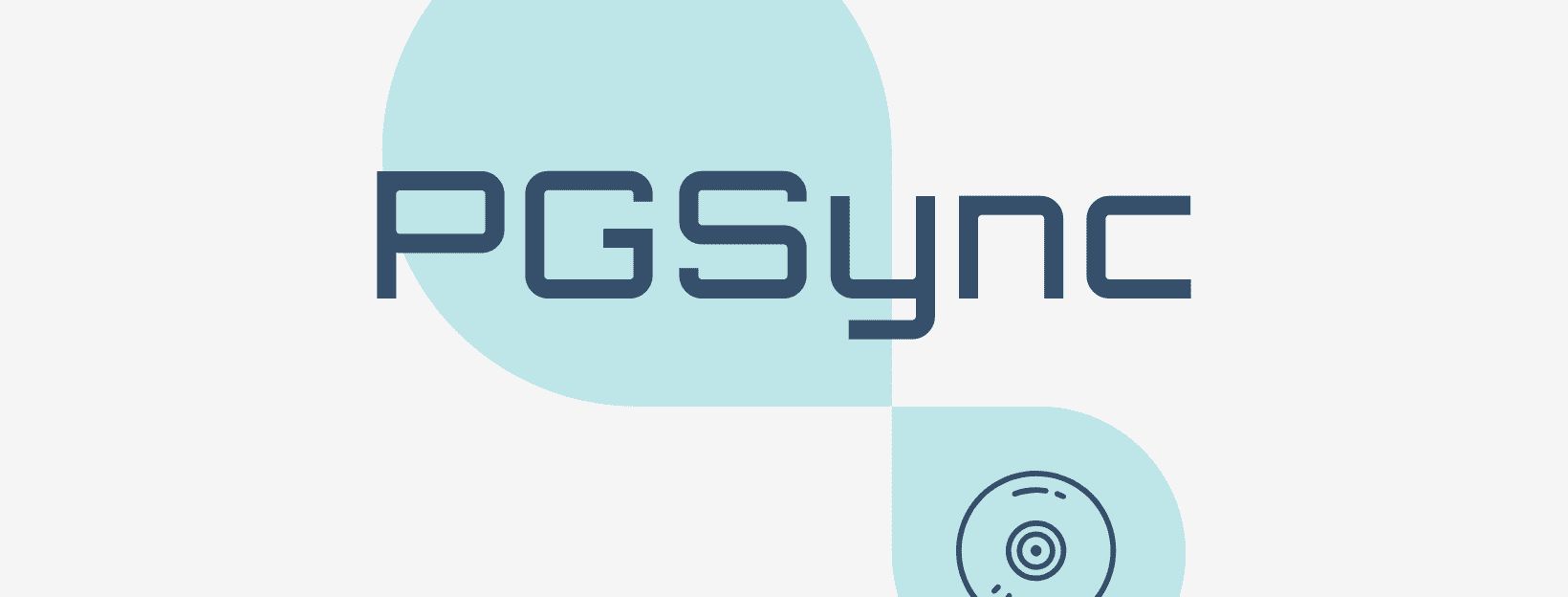 PGSync is a change data capture tool for moving data from Postgres to Elasticsearch. It allows you to keep Postgres as your source-of-truth and expose structured denormalized documents in Elasticsearch.
PGSync is a change data capture tool for moving data from Postgres to Elasticsearch. It allows you to keep Postgres as your source-of-truth and expose structured denormalized documents in Elasticsearch.
31. Your Guide To Schema-based, Multi-Tenant Systems and PostgreSQL Implementation
 There are several architectures that could be followed to achieve multi-tenancy at the database layer.
There are several architectures that could be followed to achieve multi-tenancy at the database layer.
32. 14 Open Source SQL Parsers
 Parsing SQL queries provides superpowers for monitoring data health. This post describes how to get started on parsing SQL for data observability.
Parsing SQL queries provides superpowers for monitoring data health. This post describes how to get started on parsing SQL for data observability.
33. Understanding SQL's Application in Data Science [A Deep Dive]
 To learn about SQL, we need to understand how a DBMS works. DBMS or Database Management System is essentially a software to create and manage databases.
To learn about SQL, we need to understand how a DBMS works. DBMS or Database Management System is essentially a software to create and manage databases.
34. Which Database Is Right For You? HarperDB vs. MongoDB vs. PostgreSQL
 The purpose of this article is not to determine which database is the best but to help determine which is a fit for your specific project.
The purpose of this article is not to determine which database is the best but to help determine which is a fit for your specific project.
35. How to Connect Your Bastion Server to a PostgreSQL Server with an SSH Tunnel
 In this article, you'll learn how to connect to an RDS server through a bastion server in Bash using an SSH tunnel.
In this article, you'll learn how to connect to an RDS server through a bastion server in Bash using an SSH tunnel.
36. Fear database changes? Get them under control with CI/CD
 Developers often fear database changes because a mistake by anyone on your team can lead to a major outage and even data loss. The stakes are higher when changes are not backwards compatible, cannot be rolled back, or impact system performance. This can cause a lack of confidence and slow your team velocity. As a result, database changes are a common failure point in agile and DevOps.
Developers often fear database changes because a mistake by anyone on your team can lead to a major outage and even data loss. The stakes are higher when changes are not backwards compatible, cannot be rolled back, or impact system performance. This can cause a lack of confidence and slow your team velocity. As a result, database changes are a common failure point in agile and DevOps.
37. Please Don't Use OFFSET and LIMIT For Your Pagination
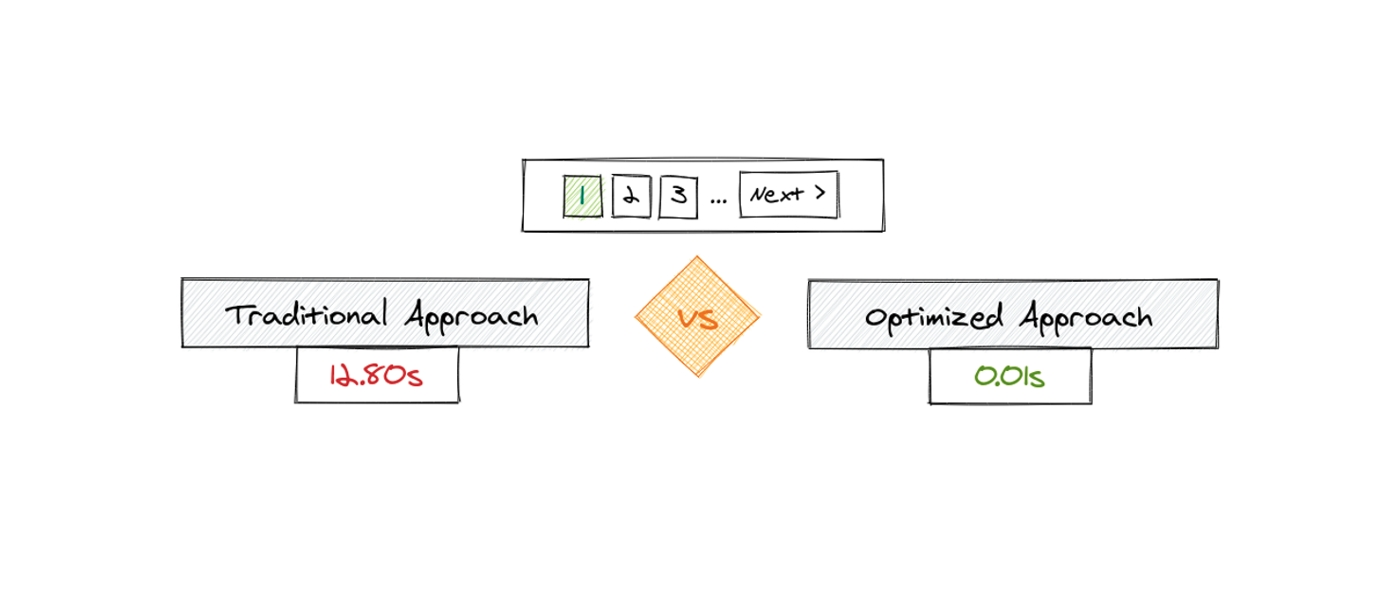 Gone are the days when we wouldn’t need to worry about database performance optimization.
Gone are the days when we wouldn’t need to worry about database performance optimization.
38. Is GraphQL Still a Thing in 2020?
 GraphQL has become the most loved tool for API development in a very short span of time, and developers across the world cannot seem to get enough of it. Today I met with the founder of Windsor.io, Pranay Prakash, who has worked on the team behind GraphQL during his time at Facebook. I chatted with him to find out more about his experience working closely with Lee Byron, the creator of GraphQL, and some of GraphQL’s benefits.
GraphQL has become the most loved tool for API development in a very short span of time, and developers across the world cannot seem to get enough of it. Today I met with the founder of Windsor.io, Pranay Prakash, who has worked on the team behind GraphQL during his time at Facebook. I chatted with him to find out more about his experience working closely with Lee Byron, the creator of GraphQL, and some of GraphQL’s benefits.
39. How to Manage Multiple Databases in Rails 6
 With the launch of Rails 6, one of the new features that were announced was of multiple database support.
With the launch of Rails 6, one of the new features that were announced was of multiple database support.
40. A Guide to Running ASP.NET Core & SQL Server from Docker
 I've recently gotten into using Docker in my development cycle and I'm really enjoying how much of a wonderful tool it is. One thing that always used to be a pain was setting up a development server to run SQL Server. Now with Docker, I can just spin up a Docker container and I instantly have a SQL Server ready to go.
I've recently gotten into using Docker in my development cycle and I'm really enjoying how much of a wonderful tool it is. One thing that always used to be a pain was setting up a development server to run SQL Server. Now with Docker, I can just spin up a Docker container and I instantly have a SQL Server ready to go.
41. 16 SQL Techniques Every Beginner Needs to Know
 This blog post explains the most intricate data warehouse SQL techniques in detail.
This blog post explains the most intricate data warehouse SQL techniques in detail.
42. Performance Testing of Python ORMs Based on the TPC-C benchmark
 Object-relational mappers (ORMs) are often used in Python programming when one needs to develop an application that works with databases. Examples of Python ORMs are SQLAlchemy, Peewee, Pony-ORM and Django. When choosing an ORM, performance plays a crucial role. But how are these toolsets compared? ORM performance benchmarks offer a measure of clarity but leave considerable room for improvement. I examine and extend the qualitative ORM benchmark to develop a stronger metric.
Object-relational mappers (ORMs) are often used in Python programming when one needs to develop an application that works with databases. Examples of Python ORMs are SQLAlchemy, Peewee, Pony-ORM and Django. When choosing an ORM, performance plays a crucial role. But how are these toolsets compared? ORM performance benchmarks offer a measure of clarity but leave considerable room for improvement. I examine and extend the qualitative ORM benchmark to develop a stronger metric.
43. Nontechnical Explanation for Why Relational Databases Don't Work
 This is What I’m Telling Business People About Why Relational Databases Are So Bad
This is What I’m Telling Business People About Why Relational Databases Are So Bad
44. How To Create and Load Test Data in PostgreSQL
 Learn what tools and approaches are available to create and load test data for webapps without an ORM.
Learn what tools and approaches are available to create and load test data for webapps without an ORM.
45. 2019 Database Trends – SQL vs. NoSQL, Top Databases, Single vs. Multiple Database Use
 Wondering which databases are trending in 2019? We asked hundreds of developers, engineers, software architects, dev teams, and IT leaders at DeveloperWeek to discover the current NoSQL vs. SQL usage, most popular databases, important metrics to track, and their most time-consuming database management tasks. Get the latest insights on MySQL, MongoDB, PostgreSQL, Redis, and many others to see which database management systems are most favored this year.
Wondering which databases are trending in 2019? We asked hundreds of developers, engineers, software architects, dev teams, and IT leaders at DeveloperWeek to discover the current NoSQL vs. SQL usage, most popular databases, important metrics to track, and their most time-consuming database management tasks. Get the latest insights on MySQL, MongoDB, PostgreSQL, Redis, and many others to see which database management systems are most favored this year.
46. Why You Should Learn SQL to Boost Your Career
 Out of 13 million new jobs that have been created in the United States in the last 10 years, over 8.5 million have required skills in technology.
Out of 13 million new jobs that have been created in the United States in the last 10 years, over 8.5 million have required skills in technology.
47. Top Tech Skills Employers Demand in 2020
 Soft skills matter in the tech world, but if you don’t know the right programming language or platform, you probably won’t get the job.
Soft skills matter in the tech world, but if you don’t know the right programming language or platform, you probably won’t get the job.
48. SQLAlchemy is a Better Way to Run Queries
 In college, I discovered a new and even better way to run queries, SQLAlchemy.
In college, I discovered a new and even better way to run queries, SQLAlchemy.
49. Every Way Natural Language is Better Than SQL
 Since the dawn of time, humans have communicated through gestures, drawings, smoke, or speech. Along the way, Structured Query Language (SQL) made its way into human life so we could speak to databases. However, it’s time to revert back to our natural language and rethink how we talk to our data.
Since the dawn of time, humans have communicated through gestures, drawings, smoke, or speech. Along the way, Structured Query Language (SQL) made its way into human life so we could speak to databases. However, it’s time to revert back to our natural language and rethink how we talk to our data.
50. Jython: The Love Child of Python and Java
 Jython is an implementation of Python that runs on Java. For the most part, it is compatible with Python 2.7.
Jython is an implementation of Python that runs on Java. For the most part, it is compatible with Python 2.7.
51. Learn How To Group Data in SQL Using The GROUP BY Clause [Tutorial]
 Learn how to group data in SQL using the GROUP BY clause. In this article, I’ll show you this process by using a sample of marketing data.
Learn how to group data in SQL using the GROUP BY clause. In this article, I’ll show you this process by using a sample of marketing data.
52. 3 Ways to Deal With Hibernate N+1 Problem
 Hibernate N+1 issue occurs when you use FetchType.LAZY for your entity associations.
Hibernate N+1 issue occurs when you use FetchType.LAZY for your entity associations.
53. Migrating Away From Query Builders and ORMs in JavaScript or TypeScript
 I spent the better part of a day moving a project completely off of the ORM we were using (TypeORM). Ever since I started doing web development, I’ve been using some kind of heavy abstraction on top of my database. Whether it’s Mongoose when I used MongoDB, or TypeORM when I decided to move to TypeScript and PostgreSQL. However, it turns out that ORMs and query builders aren’t so great. I used to be that person that thought ORMs and query builders did the job for me, and I used it as an excuse to not learn SQL (which is what everyone tells you NOT to do). Given the tools that exist today, I would wholeheartedly recommend doing it the opposite of how I did if you’re starting off new to these things — write your SQL stuff by hand, or with help from the tools I mention later in the post. It’ll feel really slow at first, but you’ll thank yourself later 😄
I spent the better part of a day moving a project completely off of the ORM we were using (TypeORM). Ever since I started doing web development, I’ve been using some kind of heavy abstraction on top of my database. Whether it’s Mongoose when I used MongoDB, or TypeORM when I decided to move to TypeScript and PostgreSQL. However, it turns out that ORMs and query builders aren’t so great. I used to be that person that thought ORMs and query builders did the job for me, and I used it as an excuse to not learn SQL (which is what everyone tells you NOT to do). Given the tools that exist today, I would wholeheartedly recommend doing it the opposite of how I did if you’re starting off new to these things — write your SQL stuff by hand, or with help from the tools I mention later in the post. It’ll feel really slow at first, but you’ll thank yourself later 😄
54. Getting Started with MariaDB using Docker, Python and Flask
 Since being forked from MySQL back in 2009, MariaDB has become one of the most popular databases of choice for developers over the past decade. While many technologists have likely gravitated to it as a solution due to its open source roots and that it's rooted in the relational database world, that really only begins to scratch the surface of what MariaDB has to offer.
Since being forked from MySQL back in 2009, MariaDB has become one of the most popular databases of choice for developers over the past decade. While many technologists have likely gravitated to it as a solution due to its open source roots and that it's rooted in the relational database world, that really only begins to scratch the surface of what MariaDB has to offer.
55. Learning Self JOIN Queries With SQLZOO
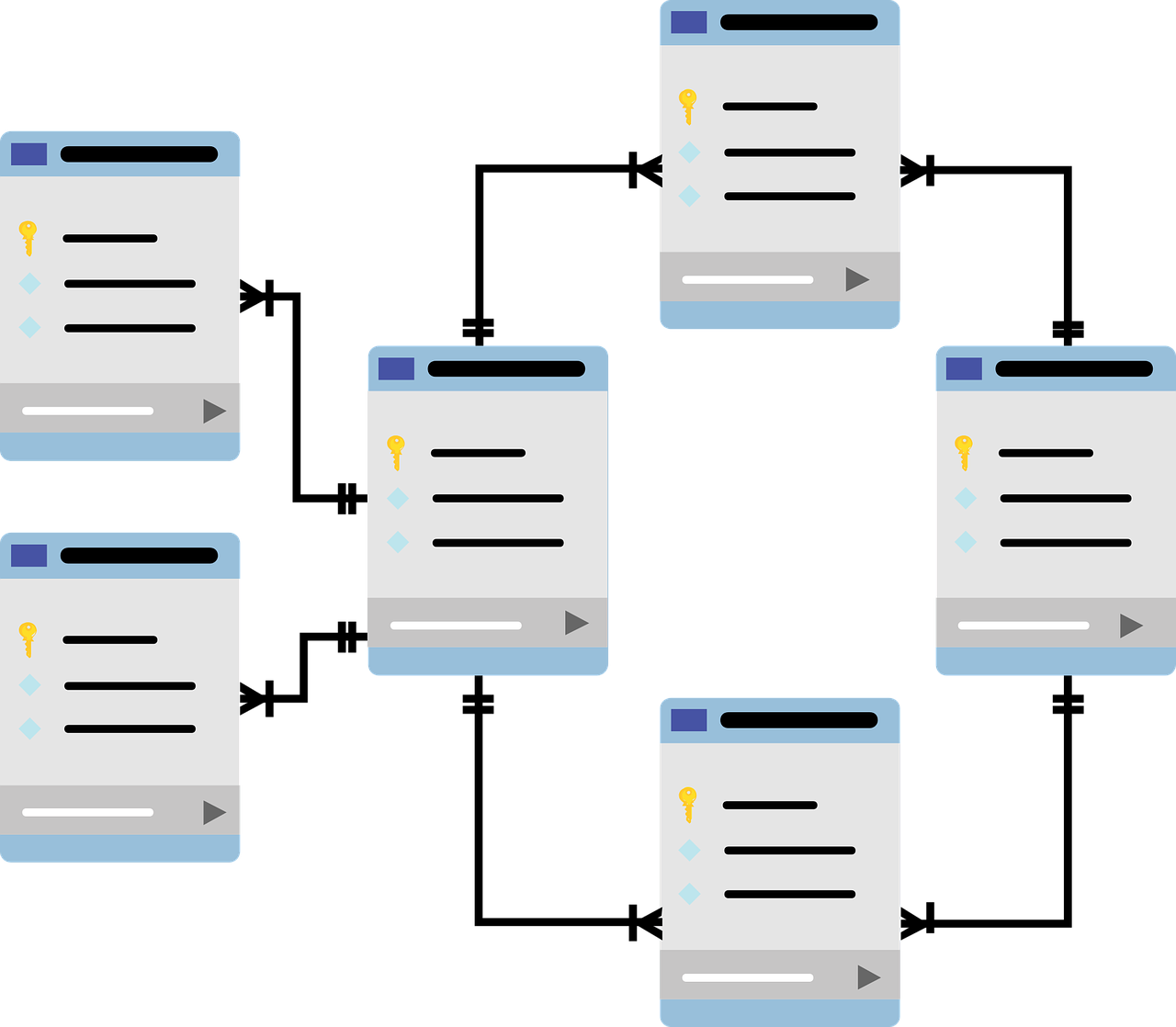 This article uses Exercise number 10 on the Self JOIN SQL ZOO tutorial to teach self JOINs in a beginner-friendly way.
This article uses Exercise number 10 on the Self JOIN SQL ZOO tutorial to teach self JOINs in a beginner-friendly way.
56. Top 10 Microsoft SQL Server Tips
 There is a lot of information about different T-SQL features.
I want to tell you about equally useful, but less popular tips for working with this language!
There is a lot of information about different T-SQL features.
I want to tell you about equally useful, but less popular tips for working with this language!
57. How To Connect MariaDB Docker Containers with Java Spring And JDBC
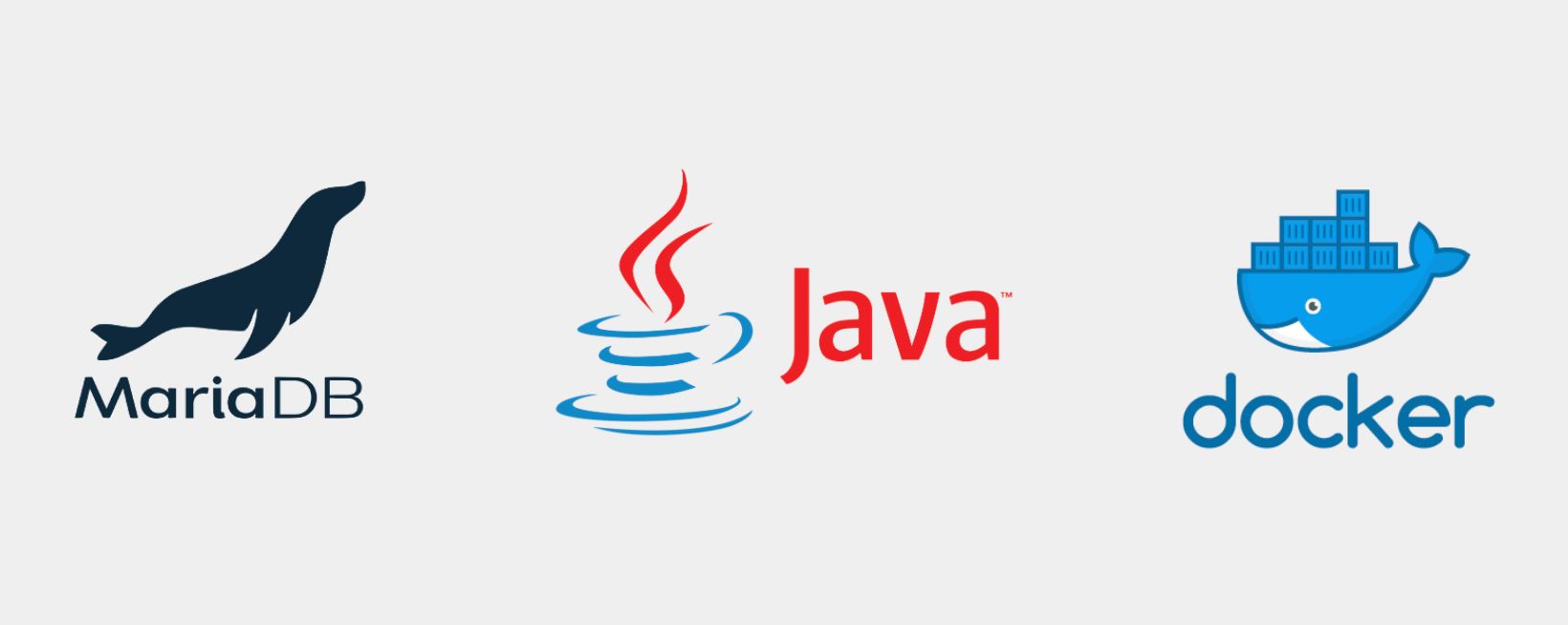 Since being forked from MySQL back in 2009, MariaDB has become one of the most popular databases of choice for developers over the past decade. While many technologists have likely gravitated to it as a solution due to its open source roots and that it's rooted in the relational database world, that really only begins to scratch the surface of what MariaDB has to offer.
Since being forked from MySQL back in 2009, MariaDB has become one of the most popular databases of choice for developers over the past decade. While many technologists have likely gravitated to it as a solution due to its open source roots and that it's rooted in the relational database world, that really only begins to scratch the surface of what MariaDB has to offer.
58. Top 5 Ways To Prevent SQL Injections
 An attacker can quickly push multiple SQL injection sequences in a python script that runs very fast and cramp up more data than you think in a single sitting.
An attacker can quickly push multiple SQL injection sequences in a python script that runs very fast and cramp up more data than you think in a single sitting.
59. Do Product Managers Need to Understand SQL and Python?
 We asked our Product Management community, ‘Do Product Managers Need SQL/ Python?' Read all about what they had to say.
We asked our Product Management community, ‘Do Product Managers Need SQL/ Python?' Read all about what they had to say.
60. SQL Injections: Beginners Guide

61. How To Create A User Portal On Airtable With Sync Inc And React
 In this tutorial, you’ll see how to build a scalable, secure, and flexible client portal on Airtable using Sync Inc, Cotter, and Next.js.
In this tutorial, you’ll see how to build a scalable, secure, and flexible client portal on Airtable using Sync Inc, Cotter, and Next.js.
62. Technical Data Science Interview Questions: SQL and Coding
 A data science interview consists of multiple rounds. One of such rounds involves theoretical questions, which we covered previously in 160+ Data Science Interview Questions.
A data science interview consists of multiple rounds. One of such rounds involves theoretical questions, which we covered previously in 160+ Data Science Interview Questions.
63. Types Of Medical Databases And Their Benefits For Humanity
 What are medical databases?Medical Databases serve as an essential part in medical care, which includes the disciplines of research, documentation, patient care and treatment. The medical industry is constantly on the lookout for new medical applications, which would help improve their services. These endeavors are usually done through databases, which store data regarding diseases, diagnosis, treatments, medication, medical devices, medical practices and other pertinent details about medical professionals. With the constant advancements made in technology, these databases have also grown to be more technologically advanced and complex.
What are medical databases?Medical Databases serve as an essential part in medical care, which includes the disciplines of research, documentation, patient care and treatment. The medical industry is constantly on the lookout for new medical applications, which would help improve their services. These endeavors are usually done through databases, which store data regarding diseases, diagnosis, treatments, medication, medical devices, medical practices and other pertinent details about medical professionals. With the constant advancements made in technology, these databases have also grown to be more technologically advanced and complex.
64. Top 12 FAQs About PostgreSQL
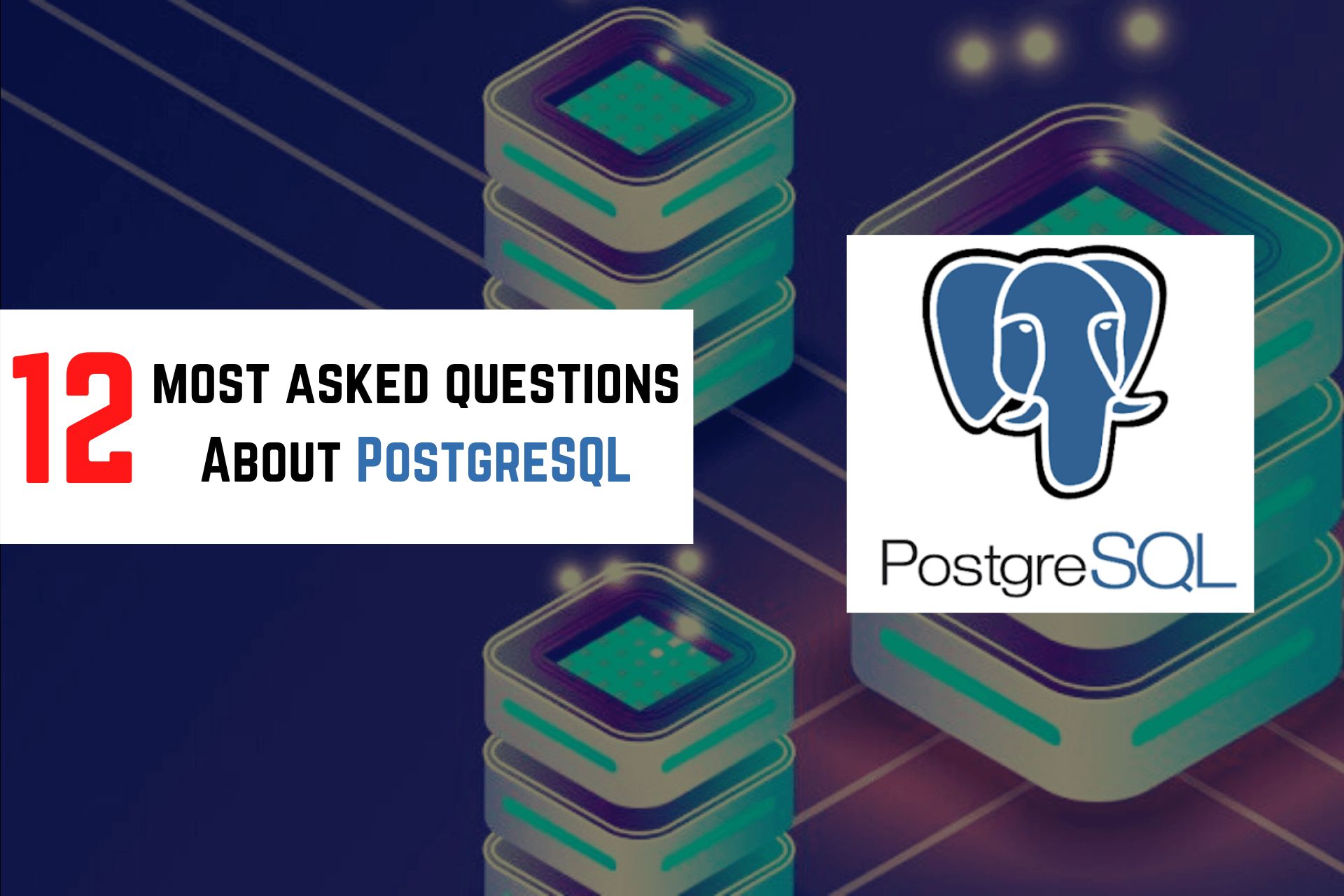 PostgreSQL is an open-source, object-relational database management
system (ORDBMS) available for all major platforms including Linux, UNIX,
Windows, and OS X. It allows you to add custom functions developed using different programming languages such as C/C++, Java, etc. It is designed to handle a range of workloads, from single machines to data warehouses or Web services with many concurrent users. It is the default database for macOS Server.
PostgreSQL is an open-source, object-relational database management
system (ORDBMS) available for all major platforms including Linux, UNIX,
Windows, and OS X. It allows you to add custom functions developed using different programming languages such as C/C++, Java, etc. It is designed to handle a range of workloads, from single machines to data warehouses or Web services with many concurrent users. It is the default database for macOS Server.
65. How to Write Raw SQL Query Migration in Laravel
 We have created a laravel package to keep the track of raw SQL migration using package Laravel raw sql query migration
We have created a laravel package to keep the track of raw SQL migration using package Laravel raw sql query migration
66. Introducing FBSQL: Frontend Backend SQL Server
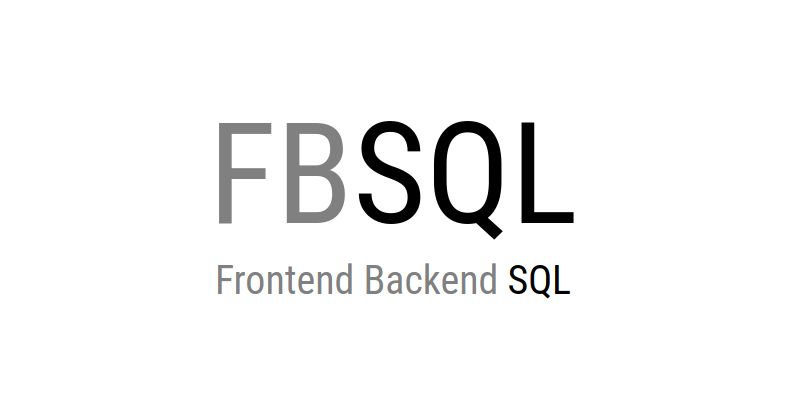 Work (secure) with your backend database within HTML
Work (secure) with your backend database within HTML
67. Customizing MariaDB Docker Images
 How to customize MariaDB Docker images: Execute SQL and shell scripts when the containers start and pass configuration files.
How to customize MariaDB Docker images: Execute SQL and shell scripts when the containers start and pass configuration files.
68. How To Create Secure Registration Flow with PHP and Password Hashing
 Building a secure user registration form with PHP seems like a scary task. How do I protect myself from MySQL injection and other methods of hacking. Surprisingly, with only a few steps and precautions, you can greatly reduce the chance of success for attacks.
Building a secure user registration form with PHP seems like a scary task. How do I protect myself from MySQL injection and other methods of hacking. Surprisingly, with only a few steps and precautions, you can greatly reduce the chance of success for attacks.
69. Simple Steps To Connect SQL Azure To SSMS
 Find out easy and sequential process on how to connect to Azure SQL Server and create a database using SQL Server Management Studio.
Find out easy and sequential process on how to connect to Azure SQL Server and create a database using SQL Server Management Studio.
70. Ruby on Rails Hidden Secrets: How To Get The Most Out Of Active Record Associations
 Hello folks! In this article, we are going to unravel the mystery behind the Rails Active Record class. To be honest, I struggled a lot with Rails models as a beginner. I spent a lot of time reading the docs, read a couple of medium articles, watched some youtube videos but all in vain. I have chosen to draft a nice article that constitutes of baby steps that is suitable for aspiring Rails Engineers.
Hello folks! In this article, we are going to unravel the mystery behind the Rails Active Record class. To be honest, I struggled a lot with Rails models as a beginner. I spent a lot of time reading the docs, read a couple of medium articles, watched some youtube videos but all in vain. I have chosen to draft a nice article that constitutes of baby steps that is suitable for aspiring Rails Engineers.
71. SQL's 50 Year Reign: Here's Why SQL Is Still Relevant Today
 Dive into the detailed history of SQL's rise and reign over the past 50 years. They remained relevant by listening and adapting to the market.
Dive into the detailed history of SQL's rise and reign over the past 50 years. They remained relevant by listening and adapting to the market.
72. The Importance Of Staying Humble And Strong Company Culture: Stephen Goldberg, HarperDB CEO
 Harper DB is a startups of the year nominee from Denver, Colorado. Stephen Goldberg, CEO, shares the origin story and what makes their company culture relevant.
Harper DB is a startups of the year nominee from Denver, Colorado. Stephen Goldberg, CEO, shares the origin story and what makes their company culture relevant.
73. 5 Ways to Store Market Data: CSV, SQLite, Postgres, Mongo, Arctic
 What's the most efficient way to store market data? SQL or NoSQL? Let's compare 5 most common options and find out what is best.
What's the most efficient way to store market data? SQL or NoSQL? Let's compare 5 most common options and find out what is best.
74. The Noonification: 6 Best SQL Programming Books Ranked by Reviews (12/17/2022)
 12/17/2022: Top 5 stories on the Hackernoon homepage!
12/17/2022: Top 5 stories on the Hackernoon homepage!
75. FastAPI with Materialize for Real-Time Data Processing: An Essential Guide
 This is a self-contained demo of FastAPI and Materialize.
This is a self-contained demo of FastAPI and Materialize.
76. The Fastest Way to Become A Professional Data Analyst
 Sharyph, a tech writer, goes over how to become a professional data analyst.
Sharyph, a tech writer, goes over how to become a professional data analyst.
77. Using a Relational Database to Query Unstructured Data
 Using Relational Database to search inside unstructured data
Using Relational Database to search inside unstructured data
78. Understanding the Command Query Responsibility Segregation Pattern

79. SubQuery to Provide Indexing and Querying Infrastructure to Developers on Algorand
 SubQuery is a blockchain developer toolkit that makes it easier to build upcoming Web3 apps.
SubQuery is a blockchain developer toolkit that makes it easier to build upcoming Web3 apps.
80. How to Make Rough Estimates of SQL Queries
 To do estimates of SQL queries we need to understand how DB works with queries. Let's find out what exactly the db do with queries.
To do estimates of SQL queries we need to understand how DB works with queries. Let's find out what exactly the db do with queries.
81. 10 Free Resources to Become a Health Data Scientist
 Becoming a health data scientist can be challenging but rewarding; it merges statistical analysis with other tools to gain insights from healthcare data.
Becoming a health data scientist can be challenging but rewarding; it merges statistical analysis with other tools to gain insights from healthcare data.
82. Retrieving your SQL LocalDB Instance Name: A How-To Guide
 This command displays some info about the specified SQL instance: this info includes the version, the owner, and the current state.
This command displays some info about the specified SQL instance: this info includes the version, the owner, and the current state.
83. JDBC Tutorial Part 3: How to Use Database Connection Pools
 Learn what database connection pools are, why you should use them, and how
Learn what database connection pools are, why you should use them, and how
84. An Overview of Database Indexing for Beginners
 Database Indexing is the most common way known and utilized by backend developers to optimize database queries.
Database Indexing is the most common way known and utilized by backend developers to optimize database queries.
85. Build your Own Live Chart With Deno, WebSockets, Chart.js and Materialize
 We will build a simple dashboard app that displays data from a Deno Web Socket server.
We will build a simple dashboard app that displays data from a Deno Web Socket server.
86. Improving Your Experience With CriteriaAPI Using Builder Pattern and JPA Static Metamodel - Part III
 An extension for the Criteria API using Builder pattern and JPA Static Metamodel Generator to reduce complexity with explicitness and to increase readability
An extension for the Criteria API using Builder pattern and JPA Static Metamodel Generator to reduce complexity with explicitness and to increase readability
87. How to Efficiently Generate Test Data With SQL
 There are a large number of utilities for generating test data. Here are some examples of using SQL queries to generate test data.
There are a large number of utilities for generating test data. Here are some examples of using SQL queries to generate test data.
88. A Primer on Decoupling SQL Engines from Hive Data Warehouse
 Are you using SQL engines, such as Presto, to query existing Hive data warehouse and experiencing challenges?
Are you using SQL engines, such as Presto, to query existing Hive data warehouse and experiencing challenges?
89. Introducing Apache ShardingSphere 5.2.0!
 ShardingSphere 5.2.0 is released bringing new cloud-native possibilities, elastic migration from Oracle, MySQL, and PostgreSQL, and more features & enhancements
ShardingSphere 5.2.0 is released bringing new cloud-native possibilities, elastic migration from Oracle, MySQL, and PostgreSQL, and more features & enhancements
90. Data Lakes Are Crucial To Business Analytics and Big Data Processing
 While the term Data is in cognizance of business of all sizes even the most layman person is aware of the buzz and fuss around Data. So from Database to Data Warehouse and now this Data Lake, we have come a long way.
While the term Data is in cognizance of business of all sizes even the most layman person is aware of the buzz and fuss around Data. So from Database to Data Warehouse and now this Data Lake, we have come a long way.
91. Unexpected Discoveries in TypeORM 0.3.11
 TypeORM is an ORM tool for TypeScript, supports popular databases and make it easy to interact with them. Upgrade to v0.3.11 for new features and improvements.
TypeORM is an ORM tool for TypeScript, supports popular databases and make it easy to interact with them. Upgrade to v0.3.11 for new features and improvements.
92. Decoding MySQL EXPLAIN Query Results for Better Performance
 Understanding MySQL explains query output is essential to optimize the query. EXPLAIN is good tool to analyze your query.
Understanding MySQL explains query output is essential to optimize the query. EXPLAIN is good tool to analyze your query.
93. Cloud Services Will Take Over the World, says Noonies Nominee and Python Teacher, Veronika
 2021 Noonies Nominee General Interview with Veronika. Read for more on cloud services, data engineering, and python.
2021 Noonies Nominee General Interview with Veronika. Read for more on cloud services, data engineering, and python.
94. The Noonification: 16 SQL Techniques Every Beginner Needs to Know (2/11/2023)
 2/11/2023: Top 5 stories on the Hackernoon homepage!
2/11/2023: Top 5 stories on the Hackernoon homepage!
95. How I Connected MySQL Shell Over SSH
 Until recently, I had only used MySQL Shell to connect to a local instance of MySQL running on my development machine.
Until recently, I had only used MySQL Shell to connect to a local instance of MySQL running on my development machine.
96. 10 Minute Guide to Fixing Damaged SQL Databases - No Recovery Required!
 In this article, I covered the use of a freeware application called FDR which can help you recover corrupt or damaged MS SQL databases.
In this article, I covered the use of a freeware application called FDR which can help you recover corrupt or damaged MS SQL databases.
97. How to Enable MariaDB Replication: A Guide
 To set up replication for a new fresh MariaDB server, you can just enable the binary log in the primary and configure the connection in the replica.
To set up replication for a new fresh MariaDB server, you can just enable the binary log in the primary and configure the connection in the replica.
98. Querty: Bringing the Power of SQL to REST APIs in your Web App
 Make your REST API easier to work with using Querty and SQL queries.
Make your REST API easier to work with using Querty and SQL queries.
99. How to Improve Query Speed to Make the Most out of Your Data
 In this article, I will talk about how I improved overall data processing efficiency by optimizing the choice and usage of data warehouses.
In this article, I will talk about how I improved overall data processing efficiency by optimizing the choice and usage of data warehouses.
100. Apache Druid, TiDB, ClickHouse, or Apache Doris? A Comparison of OLAP Tools
 The OLAP experience of an automobile manufacturer.
The OLAP experience of an automobile manufacturer.
101. Stream and Display Data in Realtime with Materialize and Adonis
 In this tutorial, we are going to build a web application using AdonisJS and integrate it with Materialize to create a real-time dashboard
In this tutorial, we are going to build a web application using AdonisJS and integrate it with Materialize to create a real-time dashboard
102. Getting started with Distributed SQL

103. Establish Your Data Team Early Using These Tools and Techniques
 Start building your data strategy team and architecture as soon as you can. A one-person data team can make a massive difference to your success as you grow.
Start building your data strategy team and architecture as soon as you can. A one-person data team can make a massive difference to your success as you grow.
104. Optimizing SQL Queries With JPA Repositories
 Today I would like to talk about how you can optimize work with JPA repositories and improve performance by avoiding native SQL queries in the code.
Today I would like to talk about how you can optimize work with JPA repositories and improve performance by avoiding native SQL queries in the code.
105. Exploring PL/SQL Nested Tables in Oracle
 In this tutorial, you will learn how to declare and initialize Oracle PL/SQL collections (Nested Tables).
In this tutorial, you will learn how to declare and initialize Oracle PL/SQL collections (Nested Tables).
106. A Quick Start Guide For MariaDB
 Get started with MariaDB with just three steps using the official MariaDB docker container.
Get started with MariaDB with just three steps using the official MariaDB docker container.
107. Small-scale Logs Processing and Analysis
 Occasionally you need to process some HTTP server logs and extract analytical data from them.
Occasionally you need to process some HTTP server logs and extract analytical data from them.
108. Generating Unique Values for Test Data in MySQL
 Generating unique values for test data in MySQL
Generating unique values for test data in MySQL
109. An In-Depth Guide to Blue-Green Deployments with Materialize
 Minimizing downtime during any deployment is a key part of any successful deployment strategy. There are many ways to achieve this.
Minimizing downtime during any deployment is a key part of any successful deployment strategy. There are many ways to achieve this.
110. Applying Statistical Analysis to Intraday Forex Trading Using SQL
 Statistical Analysis, Intraday Forex Trading, Using SQL
Statistical Analysis, Intraday Forex Trading, Using SQL
111. A Brief Introduction to MongoDB
 MongoDB is a document-oriented NoSQL database for storing large amounts of data. MongoDB uses collections and documents instead of tables and rows
MongoDB is a document-oriented NoSQL database for storing large amounts of data. MongoDB uses collections and documents instead of tables and rows
112. "SQL Will Help You Achieve Your Goals" - Jarosław Błąd, Vertabelo CEO
 We spoke to Jarosław Błąd, CEO at Vertabelo about how he set up his website based around teaching people how to code using SQL and the motivations behind it.
We spoke to Jarosław Błąd, CEO at Vertabelo about how he set up his website based around teaching people how to code using SQL and the motivations behind it.
113. Using dbt with Materialize and Redpanda

114. Comparing Different Time-Series Databases
 A comparison of data models used in open-source SQL and NoSQL time-series databases for IoT.
A comparison of data models used in open-source SQL and NoSQL time-series databases for IoT.
115. The Most Commonly Used SQL Queries by Data Scientists
 SQL (Structured Query Language) is a programming tool or language that is widely used by data scientists and other professionals
SQL (Structured Query Language) is a programming tool or language that is widely used by data scientists and other professionals
116. How to Persist Data in a Flutter App
 In this article, we will explore the different ways to persist data in a Flutter app, and the pros and cons of each method.
In this article, we will explore the different ways to persist data in a Flutter app, and the pros and cons of each method.
117. JDBC Tutorial Part 1: How to Connect to a Database
 Learn how to use databases from Java
Learn how to use databases from Java
118. An Essential Plan to Get Your SQL Knowledge Ready for Interviews
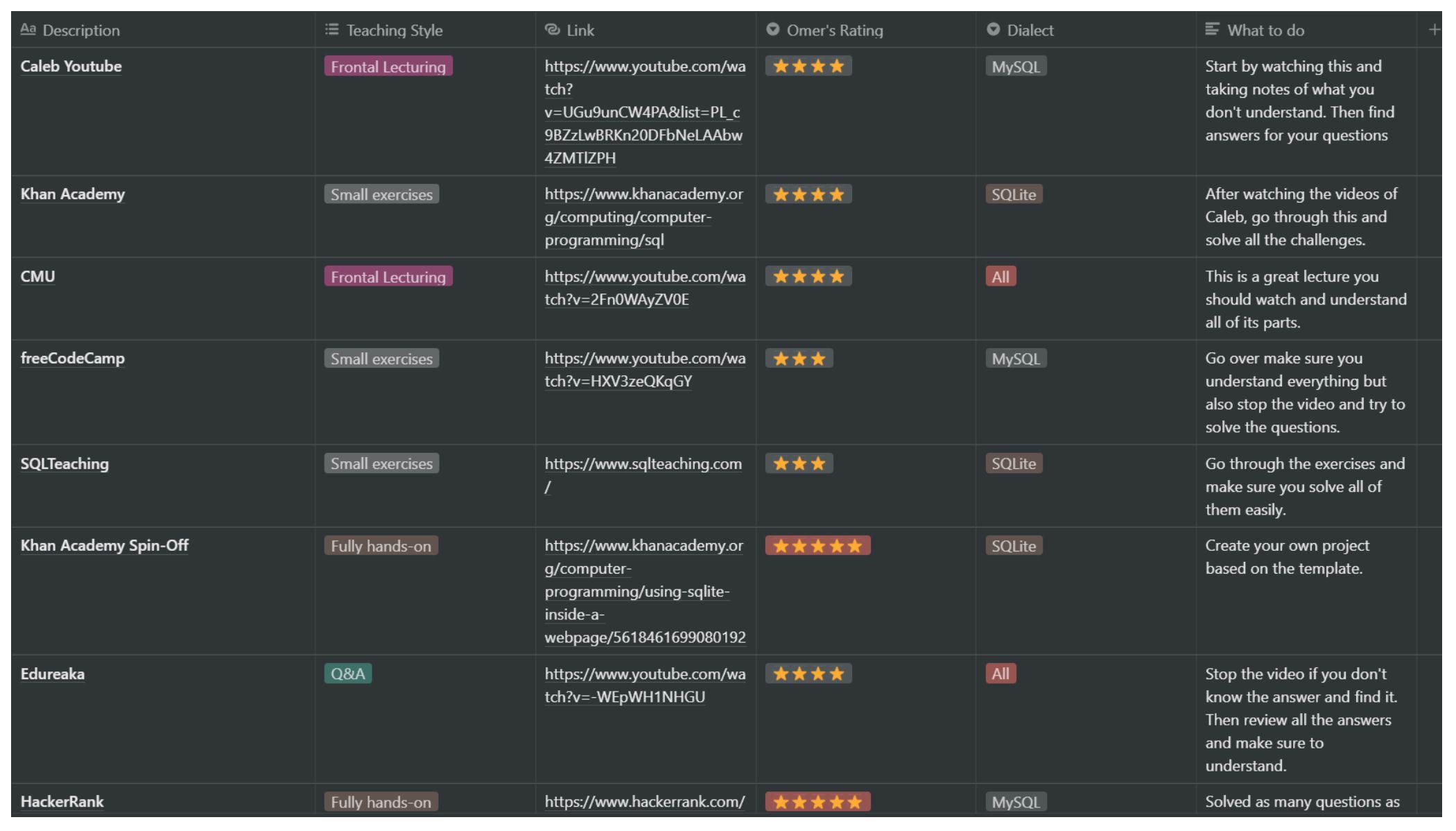 SQL is the cornerstone of a wide variety of data-intensive roles, and it is not going anywhere soon. Loads have been written about its usefulness already, so this post is focused on getting your skills from C to A+ for your interviews. No knowledge is assumed, and I feel comfortable promising that your level will be more than enough for what will be asked in interviews if you follow this game-plan.
SQL is the cornerstone of a wide variety of data-intensive roles, and it is not going anywhere soon. Loads have been written about its usefulness already, so this post is focused on getting your skills from C to A+ for your interviews. No knowledge is assumed, and I feel comfortable promising that your level will be more than enough for what will be asked in interviews if you follow this game-plan.
119. Architecture Evolution for Interactive Queries
 Presto and Alluxio working together enable a unified, robust, high-performance, low-latency, and cost-effective analytics architecture.
Presto and Alluxio working together enable a unified, robust, high-performance, low-latency, and cost-effective analytics architecture.
120. Intro to Structured Query Language (SQL)
 In the post, I used a simple SQL query to explain how certain things work in SQL. I also outlined problems with the query and potential ways to improve the code
In the post, I used a simple SQL query to explain how certain things work in SQL. I also outlined problems with the query and potential ways to improve the code
121. A Web3 Native Database: Tableland
 Smart contract developers need a web3 native database to decouple dapps and data. Tableland makes a nice try.
Smart contract developers need a web3 native database to decouple dapps and data. Tableland makes a nice try.
122. How to do Database Read/Write Splitting With Your Browser
 A tutorial that explains how a database proxy like MariaDB MaxScale serves as a transparent read/write splitter that scales SQL queries.
A tutorial that explains how a database proxy like MariaDB MaxScale serves as a transparent read/write splitter that scales SQL queries.
123. My Personal Guide to SQL Window Functions (Part 2)
 First introduced as part of the SQ:2003 Standard and available in MySQL 8.0, window functions in MySQL are compelling, but the syntax can be difficult to grok.
First introduced as part of the SQ:2003 Standard and available in MySQL 8.0, window functions in MySQL are compelling, but the syntax can be difficult to grok.
124. SQL Databases Vs. NOSQL Databases
 The decision to choose a database for project is not that simple. But when it comes to choosing a database, the biggest decisions is picking a relational (SQL) or non-relational (NoSQL) data structure.
The decision to choose a database for project is not that simple. But when it comes to choosing a database, the biggest decisions is picking a relational (SQL) or non-relational (NoSQL) data structure.
125. How to Query Deeply Nested JSON Data in PSQL
 Recently I had to write a script, which should’ve changed some JSON data structure in a PSQL database. Here are some tricks I learned along the way.
Recently I had to write a script, which should’ve changed some JSON data structure in a PSQL database. Here are some tricks I learned along the way.
126. Alternative Overview of the SSMSBoost Add-in for SQL Server Management Studio (SSMS)
 Today we will do a short review and features comparison of dbForge SQL Complete and SSMSBoost.
Today we will do a short review and features comparison of dbForge SQL Complete and SSMSBoost.
127. JDBC Tutorial Part 2: How to Run SQL Queries
 Learn how to securely run SQL queries from Java apps using JDBC to prevent SQL injection attacks
Learn how to securely run SQL queries from Java apps using JDBC to prevent SQL injection attacks
128. Introduction to Recursive CTE
 This article will introduce the concept of SQL recursive. Recursive CTE is a really cool. We will see that it can often simplify our code, and avoid a cascade of SQL queries!
This article will introduce the concept of SQL recursive. Recursive CTE is a really cool. We will see that it can often simplify our code, and avoid a cascade of SQL queries!
129. Finessing Postgres into an Insane 200x Faster Query Plan
 This article will show you a real-life optimization story and how PostgreSQL row count estimation can go very wrong when trying to get a faster query plan
This article will show you a real-life optimization story and how PostgreSQL row count estimation can go very wrong when trying to get a faster query plan
130. Spring Boot Performance Workshop with Vlad Mihalcea
 Learn how to improve the performance of a Spring application and diagnose problems in production. Lessons from our live workshop covering JPA!
Learn how to improve the performance of a Spring application and diagnose problems in production. Lessons from our live workshop covering JPA!
131. ShardingSphere-Proxy Front-End Protocol Troubleshooting Guide and Examples
 Case study: introducing the tools used in database protocol development with a troubleshooting guide for ShardingSphere-Proxy MySQL protocol issues.
Case study: introducing the tools used in database protocol development with a troubleshooting guide for ShardingSphere-Proxy MySQL protocol issues.
132. How to Quickly Get Started With PHP and MariaDB
 A simple tutorial on how to get started with PHP and MariaDB.
A simple tutorial on how to get started with PHP and MariaDB.
133. How To Improve Data Quality for More Efficient Business Operations
 Need to fix inconsistent data? This article covers how to improve data quality using real-world examples, and why data quality is an issue.
Need to fix inconsistent data? This article covers how to improve data quality using real-world examples, and why data quality is an issue.
134. Do Modern Technologies Like Serverless Really Offer Better Benefits?
 Remember mainframes? Serverless is pretty much that: we own the machine and you rent out time on our big iron. We went full circle on progress!
Remember mainframes? Serverless is pretty much that: we own the machine and you rent out time on our big iron. We went full circle on progress!
135. How to Connect With External MySQL Servers (Part 1: Select Operations)
 This tutorial shows how to perform basic select queries to interact with MySQL Server using mysql2 gem.
This tutorial shows how to perform basic select queries to interact with MySQL Server using mysql2 gem.
136. Improving your experience with Criteria API using Builder pattern and JPA Static Metamodel - Part II
 An extension for the Criteria API using Builder pattern and JPA Static Metamodel Generator to increase readability and reduce read complexity with explicitness
An extension for the Criteria API using Builder pattern and JPA Static Metamodel Generator to increase readability and reduce read complexity with explicitness
137. How You Can Take Advantage of Hazelcast to Query Your IMDG Data
 Though IMDGs are sometimes generically described as a distributed in-memory data store, IMDGs offer more than just storage. Learn why and how you query IMDG.
Though IMDGs are sometimes generically described as a distributed in-memory data store, IMDGs offer more than just storage. Learn why and how you query IMDG.
138. NoSQL vs SQL: Comparison From the Development Team
 Let’s dive into the main types of databases, their main features, and their working principles. And also development differences to be more practical.
Let’s dive into the main types of databases, their main features, and their working principles. And also development differences to be more practical.
139. How to Efficiently Manage Queues in SQL Databases
 A queue using an SQL-database? well, you need to know pros and cons, and a typical implementation.
A queue using an SQL-database? well, you need to know pros and cons, and a typical implementation.
140. How to import your MS SQL database to Amazon RDS
 I will show you how to create a database in the cloud, connect it to MS SQL, deploy from a database backup.
I will show you how to create a database in the cloud, connect it to MS SQL, deploy from a database backup.
141. Use Feature Toggle to Safely Release Updates On Your Server
 No matter how much effort is put into the development of fault-tolerant self-sustainable systems, manual interventions are inevitable.
No matter how much effort is put into the development of fault-tolerant self-sustainable systems, manual interventions are inevitable.
142. Logging in Observability - Part 2
 In this article, I want to describe how to work with logs, analyze them in the command line, and we will consider new modern tools to visualize logs.
In this article, I want to describe how to work with logs, analyze them in the command line, and we will consider new modern tools to visualize logs.
143. How to Quickly and Efficiently Create Tests for MySQL
 How to quickly and efficiently create tests for MySQL without installing any additional utilities.
How to quickly and efficiently create tests for MySQL without installing any additional utilities.
144. Intro to Databases: Using Different Data Models and Representing Databases Visually
 As you get into the Databases and Data Science, the first thing that you have to master is the relations between entities in your database. That is important because the data that you use has to be absolutely efficient for its further implementations.
As you get into the Databases and Data Science, the first thing that you have to master is the relations between entities in your database. That is important because the data that you use has to be absolutely efficient for its further implementations.
145. We need Roslyn for SQL!
 Code review and other quality assurance methods are incredibly useful tools that can be facilitated by Roslyn which is not available for SQL, though it should.
Code review and other quality assurance methods are incredibly useful tools that can be facilitated by Roslyn which is not available for SQL, though it should.
146. My Personal Guide to SQL Window Functions (Part 1)
 First introduced as part of the SQ:2003 Standard and available in MySQL 8.0, window functions in MySQL are compelling, but the syntax can be difficult to grok.
First introduced as part of the SQ:2003 Standard and available in MySQL 8.0, window functions in MySQL are compelling, but the syntax can be difficult to grok.
147. Decoding MySQL EXPLAIN Query Results for Better Performance (Part 2)
 Understanding MySQL explains query output is essential to optimize the query. EXPLAIN is good tool to analyze your query.
Understanding MySQL explains query output is essential to optimize the query. EXPLAIN is good tool to analyze your query.
148. Solving Noom's Data Analyst Interview Questions
 Noom helps you lose weight. We help you get a job at Noom. In today’s article, we’ll show you one of Noom’s hard SQL interview questions.
Noom helps you lose weight. We help you get a job at Noom. In today’s article, we’ll show you one of Noom’s hard SQL interview questions.
149. Learning SQL Can Give You a Major Career Boost
 Why learning SQL is a major career boost with LogicLoop
Why learning SQL is a major career boost with LogicLoop
150. Check Out These 8 Free SQL Courses to Learn About Oracle, MySQL, and SQL Server
 SQL is very important and many programmers realize this, however, I have found that many more programmers just don't spend much time improving their SQL skills.
SQL is very important and many programmers realize this, however, I have found that many more programmers just don't spend much time improving their SQL skills.
151. An Overview of SQL Antipatterns
 I was recently going through my notes of SQL Antipatterns and was shocked to realize how actual this book still is.
I was recently going through my notes of SQL Antipatterns and was shocked to realize how actual this book still is.
152. Azure Data Factory: An Amazing Data Migration Tool
 This blog will highlight how users can define pipelines to migrate the unstructured data from different data stores to structured data via Azure Data Factory
This blog will highlight how users can define pipelines to migrate the unstructured data from different data stores to structured data via Azure Data Factory
153. Accelerating Analytics by 200% with Impala, Alluxio, and HDFS at Tencent
 This article describes how engineers in the Data Service Center (DSC) at Tencent PCG (Platform and Content Business Group) leverages Alluxio to optimize the analytics performance and minimize the operating costs in building Tencent Beacon Growing, a real-time data analytics platform.
This article describes how engineers in the Data Service Center (DSC) at Tencent PCG (Platform and Content Business Group) leverages Alluxio to optimize the analytics performance and minimize the operating costs in building Tencent Beacon Growing, a real-time data analytics platform.
154. An Intro to SQL for Data Scientists
 The importance of SQL and how to go about learning it
The importance of SQL and how to go about learning it
155. What the Heck is PRQL?
 Another clever tool for a powerful SQL pre-processor
Another clever tool for a powerful SQL pre-processor
156. Sharing My Experience Attending MS Build 2020

157. Running Presto Engine in a Hybrid Cloud Architecture
 Migrating Presto workloads from a fully on-premise environment to cloud infrastructure has numerous benefits, including alleviating resource contention and reducing costs by paying for computation resources on an on-demand basis. In the case of Presto running on data stored in HDFS, the separation of compute in the cloud and storage on-premises is apparent since Presto’s architecture enables the storage and compute components to operate independently. The critical issue in this hybrid environment of Presto in the cloud retrieving HDFS data from an on-premise environment is the network latency between the two clusters.
Migrating Presto workloads from a fully on-premise environment to cloud infrastructure has numerous benefits, including alleviating resource contention and reducing costs by paying for computation resources on an on-demand basis. In the case of Presto running on data stored in HDFS, the separation of compute in the cloud and storage on-premises is apparent since Presto’s architecture enables the storage and compute components to operate independently. The critical issue in this hybrid environment of Presto in the cloud retrieving HDFS data from an on-premise environment is the network latency between the two clusters.
158. An Online PHP & SQL Sandbox That I Created now use ChatGPT to fix your code
 PHPize.online is a project I have been working on for the last 2 years.
PHPize.online is a project I have been working on for the last 2 years.
159. Another Solution To Sam Saffron’s Annoying INSERT Problem
 I explain how Mighty, following Rob Conery’s Massive, implements a great answer to “that annoying INSERT problem” that Sam Saffron never mentioned.
I explain how Mighty, following Rob Conery’s Massive, implements a great answer to “that annoying INSERT problem” that Sam Saffron never mentioned.
160. How to Query Multiple Results with Dapper ORM Efficiently
 Dapper is a powerful and lightweight Object-Relational Mapping (ORM) tool for C#. It is designed to be simple and fast, allowing developers to execute SQL query
Dapper is a powerful and lightweight Object-Relational Mapping (ORM) tool for C#. It is designed to be simple and fast, allowing developers to execute SQL query
161. How to Get Started With JPA/Hibernate
 JPA was born as the acronym for Java Persistence API.
JPA was born as the acronym for Java Persistence API.
162. Build a Live Dashboard with Materialize, Airbyte, MySQL and Redpanda/Kafka

163. How To Restore Your Database From a SQL Backup
 Backing up SQL and databases using the manual restore method, the full database backup, the incremental restore, or the manageauditing command.
Backing up SQL and databases using the manual restore method, the full database backup, the incremental restore, or the manageauditing command.
164. A Snap Is Worth A Thousand Words (Podcast Transcript)
 Is database migration as scary as it sounds? Amy Tom talks to Matt Groves, Senior PM Manager at Couchbase, and Curt Gratz, Co-Owner of CKH Consulting.
Is database migration as scary as it sounds? Amy Tom talks to Matt Groves, Senior PM Manager at Couchbase, and Curt Gratz, Co-Owner of CKH Consulting.
165. The SAS (Statistical Analysis System) Response To SQL Challenges in a Data Warehouse Environment
 As computing hardware became more powerful, so datasets grew. SAS in turn evolved to harness greater computational power and meet the data challenge.
As computing hardware became more powerful, so datasets grew. SAS in turn evolved to harness greater computational power and meet the data challenge.
166. How Hot Does it Get Inside a Car During a Heat Wave?
 Using a Raspberry Pi to measure the temperature inside a Ford Focus during a record-breaking heatwave.
Using a Raspberry Pi to measure the temperature inside a Ford Focus during a record-breaking heatwave.
167. How to Install and Use Materialize to Run SQL Queries on your nginx Logs
 In this tutorial, I will show you how Materialize works by using it to run SQL queries on continuously produced nginx logs. By the end of the tutorial, you will
In this tutorial, I will show you how Materialize works by using it to run SQL queries on continuously produced nginx logs. By the end of the tutorial, you will
168. 3 Tools to Make Growing and Scaling your Side Projects Easier
 Growing a side project is hard. Ex-Clourflare dev shares 3 easy to use tools to help you get more signups, analyze user data, and monitor production errors.
Growing a side project is hard. Ex-Clourflare dev shares 3 easy to use tools to help you get more signups, analyze user data, and monitor production errors.
169. Write Code to Build Your Own Playlist and Throw Away Spotify
 You don't need a whole music cloud service to get music recommendations
You don't need a whole music cloud service to get music recommendations
170. What Happened to Hadoop? What Should You Do Now?
 by Monte Zweben & Syed Mahmood of Splice Machine
by Monte Zweben & Syed Mahmood of Splice Machine
171. How To Query JSON in Couchbase via Collections and Scopes
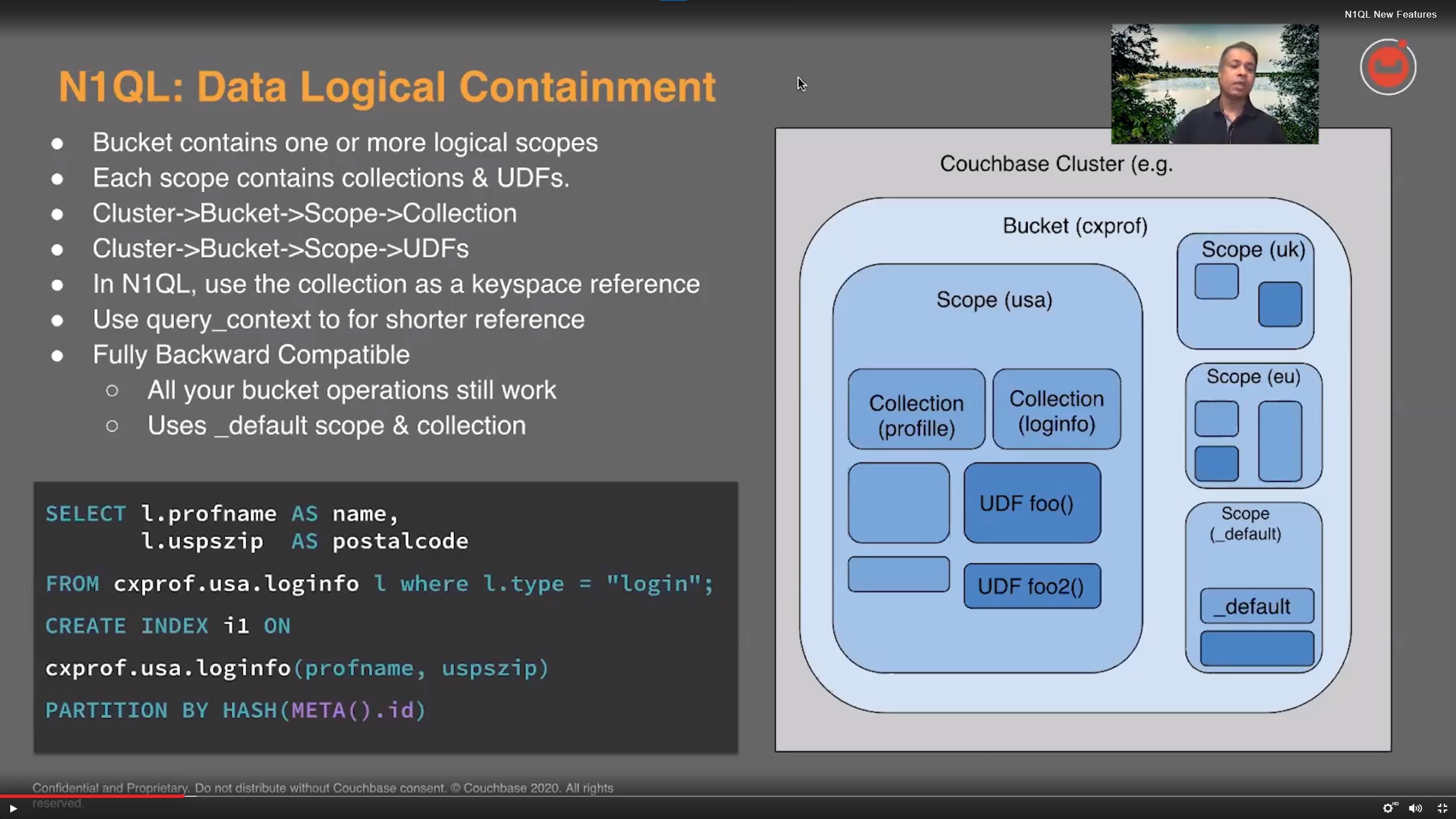 This week I’m attending the 3-day Couchbase Connect event and will be reporting on some of the topics that I find most interesting.
This week I’m attending the 3-day Couchbase Connect event and will be reporting on some of the topics that I find most interesting.
172. What is the Significance of Time-Weighted Averages in Data Analysis
 Learn how time-weighted averages are calculated, why they’re so powerful for data analysis, and how to use TimescaleDB hyperfunctions to calculate them faster.
Learn how time-weighted averages are calculated, why they’re so powerful for data analysis, and how to use TimescaleDB hyperfunctions to calculate them faster.
173. Querying Complex JSON Objects With SQL
 How many times have you run into a situation where you wish you could do a SQL join without getting duplicate rows back? What if we could get a list "column" returned instead? HarperDB’s ARRAY() function enables just that. In this post we’re going to take a look at a basic example of people with addresses and phone numbers.
How many times have you run into a situation where you wish you could do a SQL join without getting duplicate rows back? What if we could get a list "column" returned instead? HarperDB’s ARRAY() function enables just that. In this post we’re going to take a look at a basic example of people with addresses and phone numbers.
174. Getting Started with MariaDB using Docker and Node.js
 It's no secret that MariaDB has become a popular database solution for developers over the past decade. Why? Well, one could argue that it's largely because it's open source and relational. So, for developers, that basically means it's free, and we get the gist of it. But that really only begins to scratch the surface.
It's no secret that MariaDB has become a popular database solution for developers over the past decade. Why? Well, one could argue that it's largely because it's open source and relational. So, for developers, that basically means it's free, and we get the gist of it. But that really only begins to scratch the surface.
175. How To Manage Sensitive Data Using SQL Data Discovery and Classification
 The 17.5 version of SQL Server Management Studio (SSMS) brought with it a new built-in security tool. Since then, the Data Discovery and Classification feature has become a difference-maker in the protection of sensitive information.
The 17.5 version of SQL Server Management Studio (SSMS) brought with it a new built-in security tool. Since then, the Data Discovery and Classification feature has become a difference-maker in the protection of sensitive information.
176. The Rise of Reusable SQL-based Data Modeling Tools and DataOps services
 The resurgence of SQL-based RDBMS
The resurgence of SQL-based RDBMS
177. Why We Should Have Different Databases
 Today there are hundreds of SQL and NoSQL databases. Some of them are popular, some are ignored. Some are user-friendly and well documented and some are hard to use. Some are open sourced and some are proprietary. And, perhaps, the most important - some are scalable, optimized, highly available and some are difficult to scale or maintain.
Today there are hundreds of SQL and NoSQL databases. Some of them are popular, some are ignored. Some are user-friendly and well documented and some are hard to use. Some are open sourced and some are proprietary. And, perhaps, the most important - some are scalable, optimized, highly available and some are difficult to scale or maintain.
178. Integrating Python and SQL: A Guide for Beginners
 SQL is a structured query language that is used to communicate with a database where the database is the organized collection of data that is usually stored electronically on your computer.
SQL is a structured query language that is used to communicate with a database where the database is the organized collection of data that is usually stored electronically on your computer.
179. How to Create a View in SQL and Its Uses
 This brief article on VIews in SQL explains how to create a view and other various operations in a step-by-step explanation.
This brief article on VIews in SQL explains how to create a view and other various operations in a step-by-step explanation.
180. Are NoSQL databases relevant for data engineering?
 In this article, we’ll investigate use cases for which data engineers may need to interact with NoSQL database, as well as the pros and cons.
In this article, we’ll investigate use cases for which data engineers may need to interact with NoSQL database, as well as the pros and cons.
181. Cloud Computing Explained: What is Serverless SQL and Why Should You Care?
 Serverless SQL is a distributed computing tool that enables us to process distributed data using SQL language without managing the databases servers themselves.
Serverless SQL is a distributed computing tool that enables us to process distributed data using SQL language without managing the databases servers themselves.
182. Take your Materialized Views to the Next Level by Joining MySQL and Postgres

183. How to Set Up a Dedicated Database Server for Analytics
 Have that old laptop that's just in the back of your closet? Figure out how to give it a new life!
Have that old laptop that's just in the back of your closet? Figure out how to give it a new life!
184. Super Duper SQL Tips for Software Engineers
 In this post, we will talk about the features of working with SQL. We will talk about how you can possibly improve your database queries and speed up your app
In this post, we will talk about the features of working with SQL. We will talk about how you can possibly improve your database queries and speed up your app
185. Using Upsolver To Get Insights Into Your Company's Big Data
 Upsolver is a no-code data lake engineering platform for agile cloud analytics. Let's see how easy it is to use.
Upsolver is a no-code data lake engineering platform for agile cloud analytics. Let's see how easy it is to use.
186. Postgres and MySQL: Performance Comparisson
 What workload analysis and running queries can teach us about the performance differences in JSON, indexing, and concurrency.
What workload analysis and running queries can teach us about the performance differences in JSON, indexing, and concurrency.
187. Improving your experience with Criteria API using Builder pattern and JPA Static Metamodel - Part I
 An extension for the Criteria API using Builder pattern and JPA Static Metamodel to increase readability and reduce read complexity with explicitness
An extension for the Criteria API using Builder pattern and JPA Static Metamodel to increase readability and reduce read complexity with explicitness
188. Hunting for Customers With PostgreSQL
 Now more than ever, you have to hold onto every customer you can. Customers don’t love your product one minute, then fall out of love with it the next. Normally there’s a declining trend in usage of your product over time.
Now more than ever, you have to hold onto every customer you can. Customers don’t love your product one minute, then fall out of love with it the next. Normally there’s a declining trend in usage of your product over time.
189. Using SPyQL and Python to Run Command Line Analytics
 SPyQL combines Python and SQL to make querying of CSV and JSON data easy. In this tutorial we analyse the geographical distribution of cell towers.
SPyQL combines Python and SQL to make querying of CSV and JSON data easy. In this tutorial we analyse the geographical distribution of cell towers.
190. How To Add Data Sensitivity Classification Command in SQL Server 2019
 For a database administrator, the common everyday practice involves running multiple operations targeted at ensuring database security and integrity. Thus, we shouldn’t overlook the importance of sensitive data stored in the database under any circumstances. In light of this, we are excited to demonstrate the new ADD SENSITIVITY CLASSIFICATION command introduced in SQL Server 2019, which allows adding the sensitivity classification metadata to database columns.
For a database administrator, the common everyday practice involves running multiple operations targeted at ensuring database security and integrity. Thus, we shouldn’t overlook the importance of sensitive data stored in the database under any circumstances. In light of this, we are excited to demonstrate the new ADD SENSITIVITY CLASSIFICATION command introduced in SQL Server 2019, which allows adding the sensitivity classification metadata to database columns.
191. Taking a Closer Look into Google's AlloyDB Architecture for PostgreSQL
 An exploration of AlloyDB's architecture and design, focussing on its storage engine, with descriptions of how it handles reads and writes
An exploration of AlloyDB's architecture and design, focussing on its storage engine, with descriptions of how it handles reads and writes
192. How We Collaborated with Meta (Facebook) to Create Shadow Cache
 Shadow cache is deployed in Meta (Facebook) Presto and is being leveraged to understand the system bottleneck and help with routing design decisions.
Shadow cache is deployed in Meta (Facebook) Presto and is being leveraged to understand the system bottleneck and help with routing design decisions.
193. MySQL Errors Messages And Common Problems
 Errors or mistakes are common in any aspects, especially in development. Using MySQL or any database can't guarantee you an error-free environment.
Errors or mistakes are common in any aspects, especially in development. Using MySQL or any database can't guarantee you an error-free environment.
194. What is SQL? And Where is it Used?
 What is SQL? Databases use it, query APIs use it, even energetic big data dashboards use it! Where did it come from and how are developers, DBAs, and app using.
What is SQL? Databases use it, query APIs use it, even energetic big data dashboards use it! Where did it come from and how are developers, DBAs, and app using.
195. A Comprehensive Guide To Database Architectures And Use Cases
 This article will provide an overview on database architectures, including use cases and pros & cons for each of them.
This article will provide an overview on database architectures, including use cases and pros & cons for each of them.
196. The United Kingdom's New National Data Strategy (Summary and Analysis)
 This Article is a Summary for the official National Data Strategy release here
This Article is a Summary for the official National Data Strategy release here
197. A Security Vulnerability Let Anyone “Rewrite the Laws” of Gibraltar
 “Rewriting the laws” of British Overseas territory Gibraltar with SQL Injection
“Rewriting the laws” of British Overseas territory Gibraltar with SQL Injection
198. Getting Started with MariaDB using Docker and Node.js
 It's no secret that MariaDB has become a popular database solution for developers over the past decade. Why? Well, one could argue that it's largely because it's open source and relational. So, for developers, that basically means it's free, and we get the gist of it. But that really only begins to scratch the surface.
It's no secret that MariaDB has become a popular database solution for developers over the past decade. Why? Well, one could argue that it's largely because it's open source and relational. So, for developers, that basically means it's free, and we get the gist of it. But that really only begins to scratch the surface.
199. 3 Real SQL Questions Asked During Technical Interviews

200. How to Extract Knowledge from Wikipedia, Data Science Style
 As Data Scientists, people tend to think what they do is developing and experimenting with sophisticated and complicated algorithms, and produce state of the art results. This is largely true. It is what a data scientist is mostly proud of and the most innovative and rewarding part. But what people usually don’t see is the sweat they go through to gather, process, and massage the data that leads to the great results. That’s why you can see SQL appears on most of the data scientist position requirements.
As Data Scientists, people tend to think what they do is developing and experimenting with sophisticated and complicated algorithms, and produce state of the art results. This is largely true. It is what a data scientist is mostly proud of and the most innovative and rewarding part. But what people usually don’t see is the sweat they go through to gather, process, and massage the data that leads to the great results. That’s why you can see SQL appears on most of the data scientist position requirements.
201. What is an SQL Injection Attack? How To Prevent SQL Injection Vulnerabilities
 The best way to prevent SQL injection vulnerabilities is to use a framework that allows you to construct and parameterize queries safely. An ORM works well.
The best way to prevent SQL injection vulnerabilities is to use a framework that allows you to construct and parameterize queries safely. An ORM works well.
202. NoSQL: A Brief History and the DynamoDB Challenge
 Dynamo accelerated the NoSQL revolution that’s driving the database industry.
Dynamo accelerated the NoSQL revolution that’s driving the database industry.
203. The Pros and Cons of NoSQL
 Learn how NoSQL differs from SQL and how it's built for high performance and availability. And no, it doesn't stand for "No SQL".
Learn how NoSQL differs from SQL and how it's built for high performance and availability. And no, it doesn't stand for "No SQL".
204. Secure Enclaves and ML using MC²
 Announcing the official release of MC², a platform for secure analytics and machine learning.
Announcing the official release of MC², a platform for secure analytics and machine learning.
205. SQL and Database Management Skills Should Be Introduced Into School Curriculums
 This article will discuss the wide-ranging benefits of learning SQL, and how we can transform the current curriculum.
This article will discuss the wide-ranging benefits of learning SQL, and how we can transform the current curriculum.
206. Configuring SQL Server for High Availability in the Cloud
 Every big Cloud service provider offers you guaranteed SLAs availability about 99.95 %, and this percentage of availability can make you think that cloud is perfect for a SQL Server deployment which requires High Availability. Azure and AWS are the two giants of cloud services, and their geographical distribution of data centers can leverage you to think of cloud for a SQL server development configured with disaster recovery.
Every big Cloud service provider offers you guaranteed SLAs availability about 99.95 %, and this percentage of availability can make you think that cloud is perfect for a SQL Server deployment which requires High Availability. Azure and AWS are the two giants of cloud services, and their geographical distribution of data centers can leverage you to think of cloud for a SQL server development configured with disaster recovery.
207. [Tutorial] Top 5 Ways to Query your Relational Database in JavaScript [Part 1]
 If you’re developing web applications, you’re almost certainly going to be constantly interacting with a database. And when it comes time to select the way you’ll interact, the choices can be overwhelming.
If you’re developing web applications, you’re almost certainly going to be constantly interacting with a database. And when it comes time to select the way you’ll interact, the choices can be overwhelming.
208. How to Create World Leading Databases
 Jason Repp is the SVP of HarperDB, a world-leading database and development platform that is leading the charge in terms of performance, flexibility, and ease.
Jason Repp is the SVP of HarperDB, a world-leading database and development platform that is leading the charge in terms of performance, flexibility, and ease.
209. How To Find Origin And Context of JPA For Issued SQL Statements
 ORM frameworks like Hibernate and other JPA implementors can significantly simplify development of persistence layer. Introducing entity abstraction level helps to model clean business domain and to hide underlying SQL statements used to achieve persistence of the domain. Such approach is especially useful in large domains, since developer no longer needs to create and maintain all SQL statements used by application.
ORM frameworks like Hibernate and other JPA implementors can significantly simplify development of persistence layer. Introducing entity abstraction level helps to model clean business domain and to hide underlying SQL statements used to achieve persistence of the domain. Such approach is especially useful in large domains, since developer no longer needs to create and maintain all SQL statements used by application.
210. [Tutorial] Top 5 Ways to Query Your Relational Database in JavaScript [Part 2]
 Welcome back! In the first part of this series, we looked at a very "low-level" way to interact with a relational database by sending it raw SQL strings and retrieving the results. We created a very simple Express application that we can use as an example and deployed it on Heroku with a Postgres database.
Welcome back! In the first part of this series, we looked at a very "low-level" way to interact with a relational database by sending it raw SQL strings and retrieving the results. We created a very simple Express application that we can use as an example and deployed it on Heroku with a Postgres database.
211. How To Optimize Large S3 API Costs using Alluxio
 This is a guest blog contributed by datasapiens’ Juraj Pohanka, Koen Michiels and Sam Gilbert. This article described how engineers at datasapiens brought down S3 API costs by 200x by implementing Alluxio as a data orchestration layer between S3 and Presto.
This is a guest blog contributed by datasapiens’ Juraj Pohanka, Koen Michiels and Sam Gilbert. This article described how engineers at datasapiens brought down S3 API costs by 200x by implementing Alluxio as a data orchestration layer between S3 and Presto.
212. Migration Makes My Skin Crawl: From SQL to NoSQL
 Is database migration as scary as it sounds? Amy Tom talks to Matt Groves, Senior PM Manager at Couchbase, and Curt Gratz, Co-Owner of CKH Consulting.
Is database migration as scary as it sounds? Amy Tom talks to Matt Groves, Senior PM Manager at Couchbase, and Curt Gratz, Co-Owner of CKH Consulting.
213. MySQL FAQs
 MySQL is an open-source relational database management system. As the
name suggests, it is used to create, update, and store databases. It is based on SQL (Structured Query Language). So, today we will be checking out the 13 most asked questions on MySQL.
MySQL is an open-source relational database management system. As the
name suggests, it is used to create, update, and store databases. It is based on SQL (Structured Query Language). So, today we will be checking out the 13 most asked questions on MySQL.
Thank you for checking out the 213 most read stories about Sql on HackerNoon.
Visit the /Learn Repo to find the most read stories about any technology.

